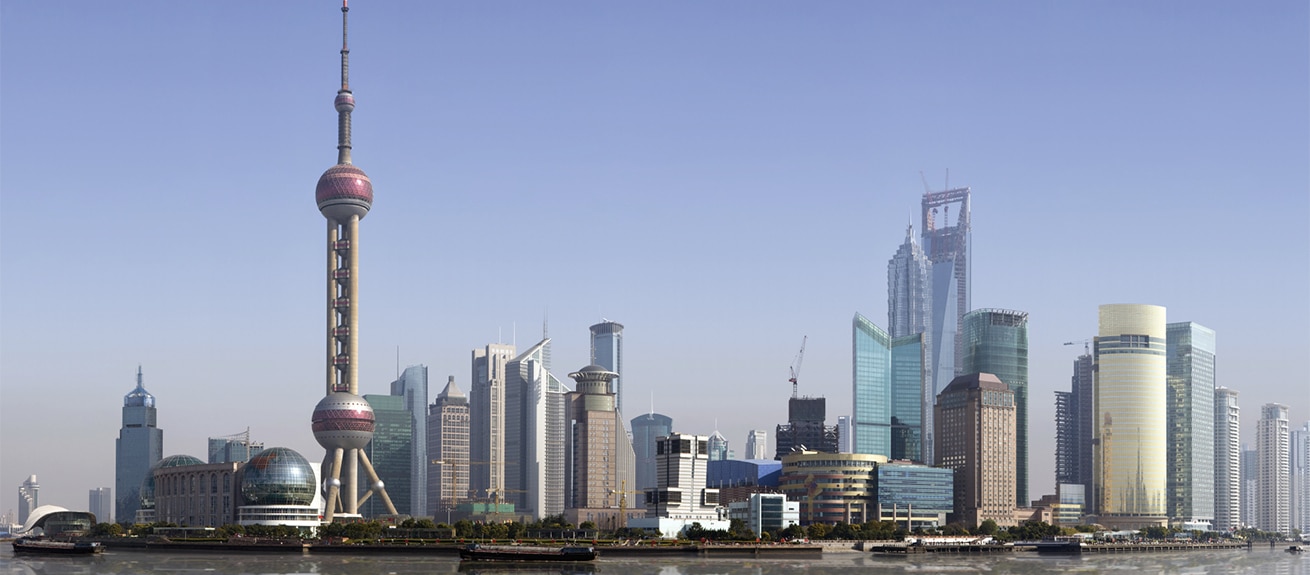
Is China triggering a global crisis?
The recent steep slides on global stock markets have been a long time in the making. As early as two years ago, it was becoming obvious that in addition to the contraction of global demand, as well as the general increase in the relative competitiveness of other Asian countries, China’s rapid rise was coming to a screeching halt and leaving excessive debt in its wake.
In recent weeks, the Chinese market experienced its biggest weekly fall in 20 years, tumbling more than 15%. This volatility serves as a further warning: China is still an emerging market, and it has an immature financial system.
Excessive debt
Excessive debt is infecting every sector of China’s economy, from real estate and local governments to state-run or partially government-controlled companies.
Most large companies in China were on a roll for a number of years, in large part thanks to subsidies from the government. But, at the same time, they were not accruing capital because their activities were so dependent on subsidies. Chinese banks, which are mainly controlled by the Communist party, compounded matters by giving credit at artificially low interest rates fueling excessive debt in all of the country’s sectors.
Many of China’s largescale development projects are perfect examples of how excessive debt has piled up. Infrastructure projects, funded by subsidized loans with low interest rates, yield low profitability and weak capital productivity. Much of this credit is given through a system called “shadow banking”, meaning it does not go through normal bank loans; credit products are sold directly to individuals.
Public sector debt, particularly at the local and regional levels, has been enormous. They have gotten in their current predicament by over-relying on infrastructure projects. This cannot last forever as there are only so many roads one can build.
Demography and environment woes
China also has a number of other problems on top of its high level of debt and low capital productivity. Due to the one child policy being in place for so long, its massive elderly population will have to be sustained by a much smaller working population. Social spending by the state will only increase exponentially, especially on education and health. The Chinese government also has a very high budget deficit. It is officially estimated to be at 3% or more in 2016, but how high it will really climb is anyone’s guess.
Last but not least, the country’s environmental problems are a well-known major burden to China and the rest of the world. Anyone who’s ever been to or seen pictures from Beijing is familiar with the city’s residents making their way around the city in anti-pollution masks.
Chinese authorities face some very tough choices ahead. China is currently exhibiting many “rich country” problems while it has the budget of a “poor country”. A structural reform of its tax system is now clearly needed; its current system is archaic and biased. No country can have its cake and eat it too. If China wants a market economy, then it must understand that intervening in markets is bound to fail, and it must learn to accept the volatility that comes with any open market economy. The volatility we are currently experiencing in the markets only confirms what many already know: Beijing doesn’t have that much control over the economy anyways.
In the coming years, China will most likely go through a very similar scenario as Europe has in the years after financial crisis. Serious restructuring in Chinese business models and banks’ balance sheets. This does not mean that the Chinese economy will collapse. Far from it. We will see much lower growth rates, but there will still be growth.
Contained effects
China’s sheer size and role on the global stage means that its problems will create risk for the global economy. However, don’t expect a crisis of 2008-2009 proportions. Any damage China will cause will be relatively contained. Some countries that might have to worry are those that export raw materials or luxury goods, and on a smaller scale, the Eurozone.
Nuno Fernandes is Professor of Finance at IMD, where he directs the Strategic Finance program and also Finance Fundamentals for Executives, a new IMD “Global Leadership in the Cloud” program. He is the author of Finance for Executives: A Practical Guide for Managers.
Research Information & Knowledge Hub for additional information on IMD publications

CFOs must drive a financially disciplined way to manage environmental and climate risk amid growing push back against sustainability efforts.

Geopolitical turmoil and its workforce impact demand a systems thinking approach from CHROs, argue IMD’s Katharina Lange and Simon Evenett.

How a private equity-backed corporate carve-out created a successful, sustainable consulting powerhouse by Benoit Leleux

China’s apparel sector in 2025 sees local brands rise and global players adapt amid digital, Research & Development, and innovation-led growth.

Explore how innovation, R&D, and policy reforms are reshaping China’s pharmaceutical sector amid rising healthcare demand and demographic shifts.

Stay ahead in a shifting global economy. Learn how to build resilient supply chains, manage currency risks, and adapt strategies for long-term business success.

Women’s realities are often overlooked, but lifepreneurs—entrepreneurs innovating from experience—are turning struggles into profit and systemic change.
It's a reversal of the situation: Chinese automaker BYD is offering to collaborate with former electric car pioneer Tesla. From drones to livestream trading to artificial intelligence: China is often ahead of the West.

Haier's CEO Zhou Yunjie explains how the company's innovative RenDanHeYi model empowers employees, drives global growth, and adapts to market changes.

Switzerland should assess the Credit Suisse collapse before adding more banking regulations, says UBS Group CEO in a talk on Europe's financial future.
Research Information & Knowledge Hub for additional information on IMD publications
Research Information & Knowledge Hub for additional information on IMD publications
Research Information & Knowledge Hub for additional information on IMD publications
Research Information & Knowledge Hub for additional information on IMD publications
Research Information & Knowledge Hub for additional information on IMD publications
Research Information & Knowledge Hub for additional information on IMD publications
Research Information & Knowledge Hub for additional information on IMD publications
Research Information & Knowledge Hub for additional information on IMD publications
Research Information & Knowledge Hub for additional information on IMD publications
Research Information & Knowledge Hub for additional information on IMD publications

